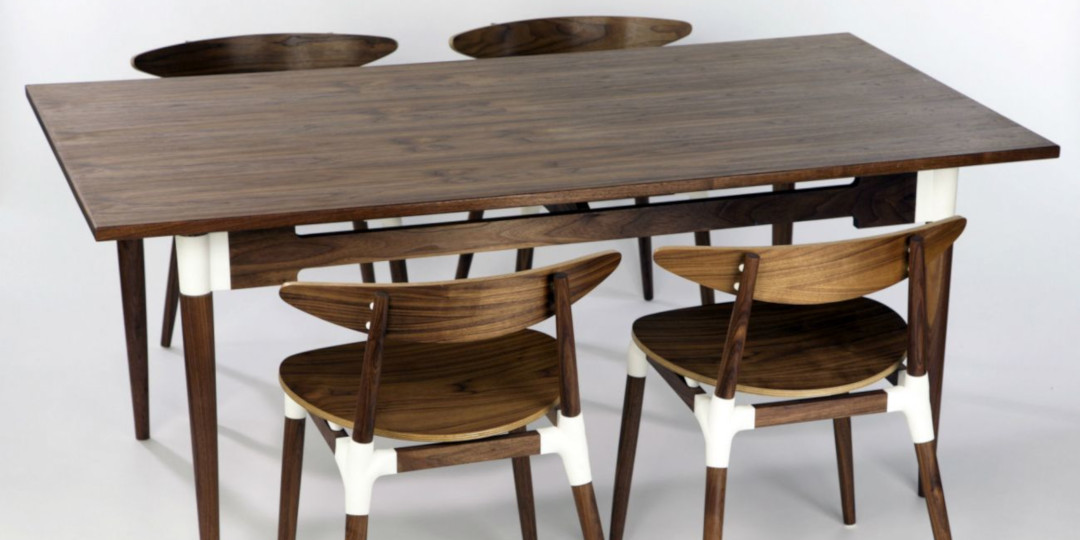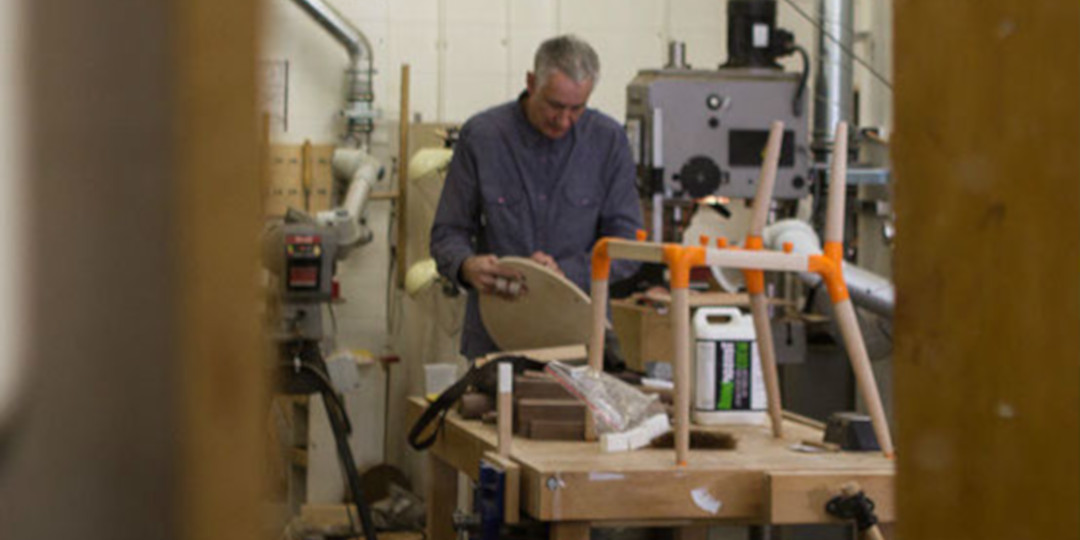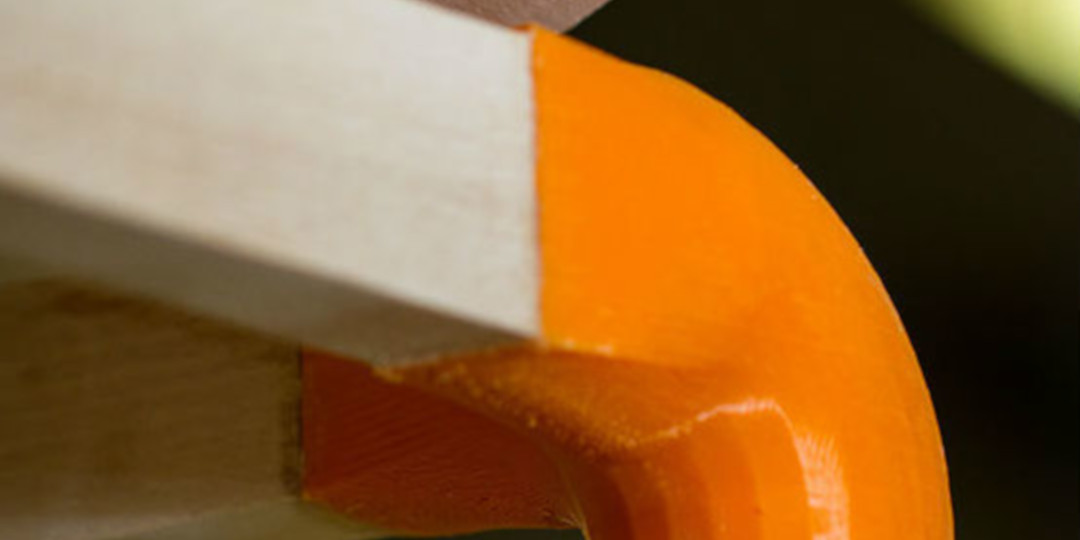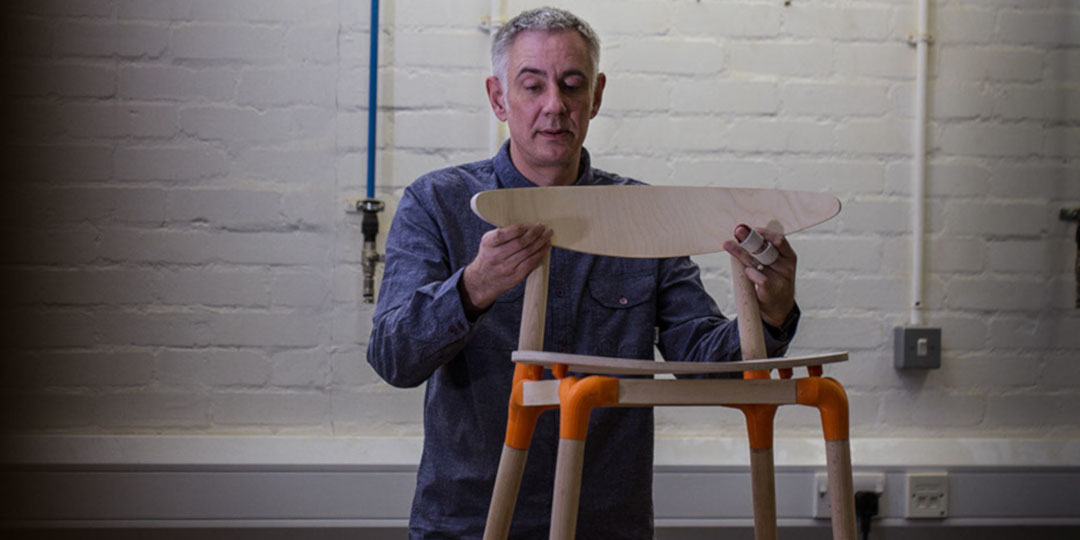3D printing offers almost limitless scope for imagination – and this is particularly the case in furniture design. Meet designer Jon Christie, who has created a table and chairs using hybrid 3D printing technology - offering flexibility, modernity and reduced time/cost wastage.
Tradition meets modernity
Jon Christie is a former DJ with over 20 years’ experience working with furniture and lighting. In his latest ground-breaking project, he’s been exploring how to merge traditional furniture manufacturing with cutting-edge 3D print technology.
In his designs for both tables and chairs, Christie has seamlessly blended authentic craftsmanship with modernist design. By using 3D printing, he’s been able to create pieces that are not only flexible and funky but also cost-effective.
The Scandinavian approach
A visit to Denmark provided Christie with the ideal starting point. Inspired by the sleek, modernist designs of Scandinavia, he started to experiment with his own designs; in particular, focusing on how 3D printing could be incorporated into traditional furniture.
“The furniture I admire most has a high degree of craftsmanship, features beautiful natural materials and has proved to be timeless,” he states. However, Christie was intrigued by how 3D printed joints could assist furniture craftsmen, and help them to make something with high visual impact – the perfect blend of old and new.
Mastering 3D printing
Christie is an experienced traditional furniture craftsman. 3D printing was an entirely new technology to him, which he had to learn from scratch. “Through a lot of trial, error, sweat and tears,” he says, “I’d like to think I’ve become something of an expert, and have now mastered the substitution of tricky woodworked parts with 3D printed joints.”
Through experimentation with a variety of materials, and mastering several new CAD software packages, he finally found the right combination for his furniture – and when showcasing the final designs as part of his degree, he selected a natural white Polyamide, which offers a good contrast against the walnut.
Christie is keen to emphasize that 3D printing is used to complement the original techniques, not to replace them. “I would look to use 3D printing where it would bring the most benefits in the design, and stick to traditional manufacturing techniques otherwise.” He believes that, by using 3D printing, his furniture designs can be mass customized far more easily, with less waste, faster production times and cheaper distribution.
The 3D printed chair and table components can be tailored at minimal cost to the customer’s dimensions, their choice of hardwood and color. Tabletops come in all shapes and sizes and the same 3D printed component can be used to make a 16-seat dining table or a regular sized desk.
Why 3D printing?
Christie claims that 3D printing makes it possible to design with much greater freedom. More complicated geometry or sculptural forms suddenly become possible, and it’s also far easier to prototype quickly or manufacture to a high standard.
“If these were traditional chairs,” he says, “they would need to be put together and sent in a large box to the customer. With the 3D printed joints, furniture can be sent disassembled for quick assembly at its destination.”
Additionally, the chair and table can be tailored to the customer’s tastes – at a minimal cost. The design allows users to customize color, dimensions, and choice of hardwood.
Taking furniture to new places
Jon Christie’s designs demonstrate just how effective 3D printing can be in furniture design; not only in terms of innovation but also practicality. To hear Christie talk more about his work, watch this video, or visit his website.
To find out more about Ultimaker Polyamide (Nylon) click here. If you’d like to learn more about 3D printed end-use parts, visit this page.



























